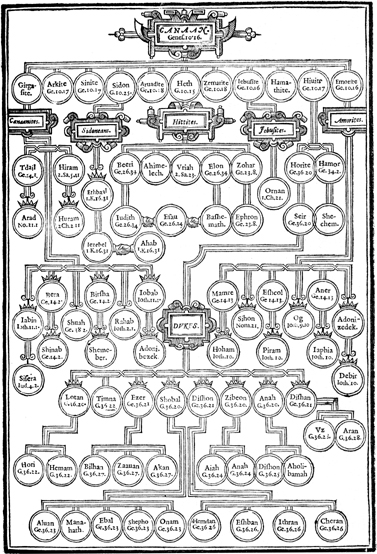The Books of Lives
“These are the generations of the heavens and the earth…” Genesis 2:4
The word “generations” is toledot. Some scholars believe this indicates earlier sources for the texts of Genesis, ancestral documents that were collated and assembled. But this view reflects modern distrust in the deliberate, careful process of revelation throughout Bible history. The eye of faith sees that these texts were always “Covenant texts.” God is a documentary God. Nothing is left to chance. The toledot are not only historically but also Covenantally significant.
Jason DeRouchie writes:
The toledot are transitional headings that progressively direct the reader’s focus from progenitor to progeny and narrow the reader’s focus from all the world to Israel, through whom all families of the earth will be blessed.
Kenneth A. Mathews has rightly identified the toledot in Genesis as transitional headings, “echoing from the preceding material a person’s name or literary motif and at the same time anticipating the focus subject of the next.” By their very nature, the toledot address what is produced from a progenitor and not the progenitor itself. In the words of Victor P. Hamilton, “[They] suggest movement from a starting point to a finishing point, from a cause to an effect, from a progenitor to a progeny.”
More than this, as Joseph Blenkinsopp has recognized, when Genesis is taken as a whole, the toledot witness an intentional narrowing of focus, beginning with the whole world and ending with “the descendants of Abraham in the direct line as sole claimants to the land of Canaan.” The book, therefore, helps place Israel and her mission within the context of the whole world, a fact adding to the book’s missional thrust. [1]
Interpreting the toledot as transitional headings (rather than summary statements of preceding texts) hits the nail on the head. Each describes the outflow, the “Covenant Succession” of the previous “matrix” cycle.
DeRouchie continues:
Genesis 1:1–2:3 provides the prefatory lens into the toledot units, with the blessing-commission of 1:28 playing a central role in understanding the development and narrowing in the book.
Grasping properly the intended role of the toledot units will likely only be accomplished when they are interpreted in light of the book’s preface, which climaxes in the blessing-commission of Genesis 1:28.
In the beginning, God’s call was not simply for humanity’s growth and oversight in the world. These activities were to be performed by divine image bearers. It was those that resemble, reflect, and represent their father God (see 5:1–3) that were to be fruitful, multiply, and fill, subdue, and have dominion over the earth (1:26–28).
The commission was about God’s greatness being put on display in all places and from generation to generation. This fact suggests that the developing toledot in Genesis have something to do with clarifying how this vision of spreading a global passion for God’s supremacy would be accomplished, especially in light of humanity’s proneness to sin. [2]
So, just as the “Testing” cycle of Adam was to equip him to faithfully represent God, the toledot “transitions” described the passing of the baton, the blessed or cursed future bought by the Covenant faithfulness or disobedience of those with Covenant authority in the previous cycle.
Thus, it’s not a great stretch to read each statement, in one sense, as a kind of Covenant “score card.” You have just read what they did. Now, here’s what came out of it. Each process begins with some sort of Garden, a delegated authority, as the first Sabbath, and ends with “rivers of men” at Tabernacles. Of course, the final result of the Old Covenant was Christ, whose faithfulness was due alone to the Covenant faithfulness of God.
What will my “Covenant legacy” be? Under the Old Covenant, the outflow was children who were a blessing or a curse to the world. Under the New Covenant, God is still concerned with our raising of godly offspring, but the world will not, indeed, cannot, be won simply through “Covenantal procreation.” The New Covenant (“federal”) vision is one of spiritual offspring. Christ is most certainly concerned with our faithful witness (in word and deed) to our physical children, but the focus has shifted to our witness to the world. Sons and daughters of God are no longer recorded in toledot. Men are “Glorified” in children of flesh, a carnal Succession, but God is not. Our family trees are being cut down and reassembled (using nails) into a new house.
The entire Bible follows the Covenant structure, so history will have its final “outflow.” But it won’t be genealogical. The toledot were “books of lives,” but where we came from no longer matters. All that matters now is where we are going: The Book of Life, the book of the “divine image bearers.”
As discussed in Known in the Gates, this final outflow, rivers of “divine men,” is to be reflected in baptism. It is not genealogical. The New Testament, through a new Covenant, gives new meaning to the phrase “sons of God.”
”Beloved, now are we the sons of God, and it doth not yet appear what we shall be: but we know that, when he shall appear, we shall be like him; for we shall see him as he is.” 1 John 3:2
_______________________________
[1] Jason DeRouchie, The Toledot Structure of Genesis: A Textlinguistic, Literary, and Theological Analysis, pp. 8-9.
[2] DeRouchie, pp. 9-10.
(Thanks to Joe Rigney for the document. It is very detailed and contains some fascinating charts.)


























